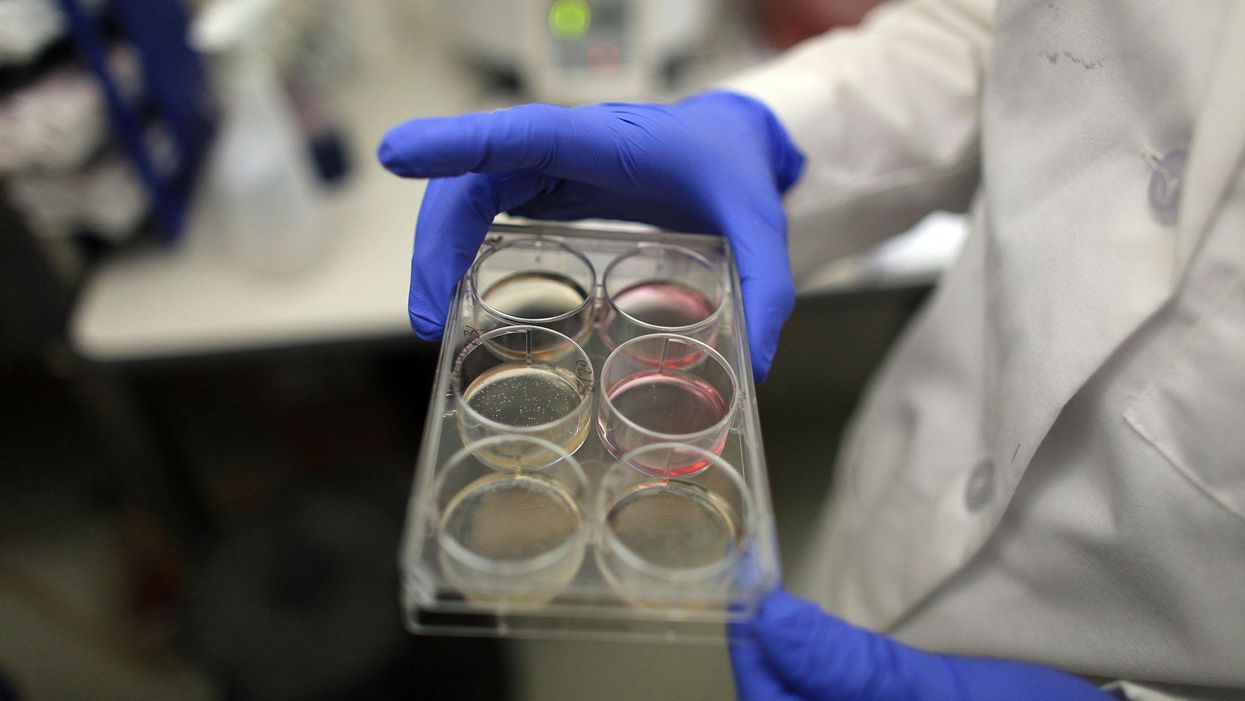
Photo by Spencer Platt/Getty Images

Scientists say that the world's first living, self-healing robots — known as xenobots — can now reproduce in a way that's not been observed in plants or animals.
Researchers at the University of Vermont, Tufts University, and Harvard University's Wyss Institute for Biologically Inspired Engineering debuted the xenobots — formed from the stem cells of African clawed frogs — in 2020, CNN reported.
That year, scientists insisted that the xenobots could not reproduce.
One year after the xenobots' unveiling, Michael Levin — co-lead author of the new research as well as professor of biology and director of the Allen Discovery Center at Tufts University — said that he was "astounded" by the knowledge that the xenobots can reproduce.
"Frogs have a way of reproducing that they normally use but when you ... liberate (the cells) from the rest of the embryo and you give them a chance to figure out how to be in a new environment, not only do they figure out a new way to move, but they also figure out apparently a new way to reproduce," he said in reference to the new study, which was published in the peer-reviewed scientific journal PNAS on Monday.
According to a Monday CNN report, "C-shaped parent xenobots collect and compress loose stem cells together into piles which can mature into offspring."
The study showed that xenobos organisms can locate nearby other single cells and assemble new xenobots, which will then in turn mature and begin the process of reproduction with other single cells once more.
The organisms — which are said to be less than a millimeter wide — are designed on an AI mainframe and assembled by hand.
Study researcher Douglas Blackiston added, “People have thought for quite a long time that we’ve worked out all the ways that life can reproduce or replicate. But this is something that’s never been observed before."
Josh Bongard, a computer science professor and robotics expert at the University of Vermont as well as lead author of the study, added that robots aren't simply metal and wires — and that an engineered combination of molecular biology and artificial intelligence meets the definition of what a robot is.
"Most people think of robots as made of metals and ceramics but it's not so much what a robot is made from but what it does, which is act on its own on behalf of people," Bongard explained. "In that way it's a robot but it's also clearly an organism made from genetically unmodified frog cell."
Bongard in 2020 added, "These are novel living machines. They're neither a traditional robot nor a known species of animal. It's a new class of artifact: a living, programmable organism."
According to the researchers' website, such engineering could "repair birth defects, reprogram tumors into normal tissue, regenerate after traumatic injury or degenerative disease, and defeat aging."
The 2020 study, which was partially funded by the Defense Advanced Research Projects Agency, a federal group that oversees the development of technology for military use, also determined that xenobots could be used to remove microplastics from the world's oceans, clean up radioactive waste, and even work in a medically invasive capacity, scraping plaque from human arteries.
UVM and Tufts Team Builds First Living Robotswww.youtube.com